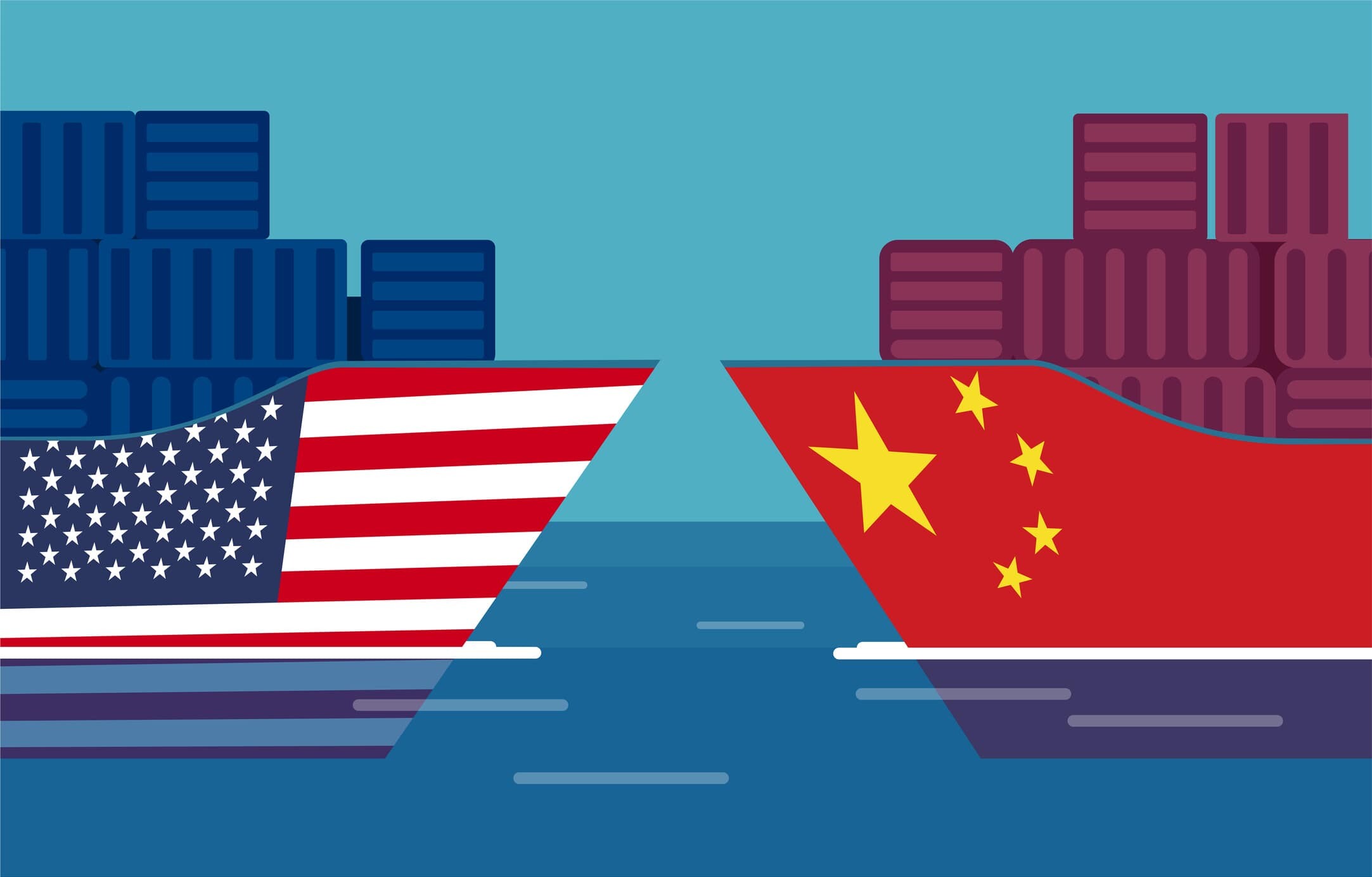The Impact Of The US-China Trade War On A Canadian Aluminum Trader

Table of Contents
Disruptions to the Global Aluminum Supply Chain
The US-China trade war significantly disrupted the global aluminum supply chain, presenting numerous challenges for Canadian aluminum traders.
Increased Tariffs and Import Restrictions
The US imposed significant tariffs on aluminum imports from China, aiming to protect domestic producers. This action had a ripple effect throughout the global market, impacting prices and trade flows.
- Increased Raw Material Costs: Canadian aluminum traders faced substantially higher costs for raw materials, as many relied on aluminum sourced from, or processed through, China. This squeezed profit margins and reduced competitiveness.
- Navigating Complex Trade Regulations: Compliance with constantly evolving trade regulations and tariffs became a significant burden, requiring expertise in international trade law and logistics. This added administrative overhead and legal risks.
- Transportation Costs and Logistics: Tariffs and trade restrictions complicated transportation routes, leading to increased shipping costs and delivery delays. Finding alternative, cost-effective shipping solutions became crucial.
Shifting Market Dynamics
The trade war dramatically altered the demand and supply dynamics within the aluminum market.
- Impact of Chinese Aluminum Production: Changes in Chinese aluminum production, influenced by both tariffs and domestic policies, significantly affected global aluminum prices. Canadian traders had to constantly monitor and respond to these shifts.
- Alternative Sourcing Strategies: To mitigate the impact of tariffs and supply chain disruptions, Canadian traders explored alternative sourcing strategies, looking to countries such as Russia, the UAE, and Australia for raw materials and processed aluminum. This required thorough market research and the establishment of new supplier relationships.
- Increased Competition: The trade war increased competition from other aluminum-producing nations that were not directly impacted by the tariffs. Canadian traders had to differentiate themselves through pricing, quality, and service to maintain market share.
Price Volatility and Hedging Strategies
The US-China trade war created significant price volatility in the aluminum market, posing a major challenge for Canadian aluminum traders.
Impact of Tariffs on Aluminum Prices
The imposition of tariffs introduced a high degree of uncertainty into aluminum pricing, making accurate forecasting extremely difficult.
- Challenges in Forecasting Aluminum Prices: The unpredictable nature of the trade war made accurate price forecasting extremely challenging. Traders had to rely on sophisticated modeling and market intelligence to mitigate risk.
- Effectiveness of Hedging Strategies: Traders heavily relied on hedging strategies such as futures contracts and options to mitigate risk associated with price volatility. The effectiveness of these strategies varied depending on market conditions and the trader's ability to accurately predict price movements.
- Increased Use of Risk Management Tools: The trade war highlighted the importance of robust risk management tools and strategies. This involved not only hedging but also diversification of supply sources, customer base, and financial instruments.
Financial Risk Management
Effective financial risk management became paramount during this period of uncertainty.
- Role of Financial Institutions and Insurance: Financial institutions played a crucial role in providing credit and hedging solutions. Insurance products were also utilized to mitigate specific risks, such as political risk and supply chain disruptions.
- Accurate Financial Forecasting and Budgeting: Precise financial forecasting and budgeting were essential to navigate the volatile market. Traders needed to accurately assess their cost of goods sold, operating expenses, and potential revenue streams to maintain profitability.
- Impact on Credit Availability and Financing Options: The trade war’s uncertainty impacted credit availability and financing options for some aluminum traders, making it harder to secure loans and lines of credit.
Opportunities for Canadian Aluminum Traders
While the US-China trade war presented considerable challenges, it also opened up some unexpected opportunities for Canadian aluminum traders.
Increased Demand from Alternative Markets
The trade war disrupted established supply chains, creating demand in alternative markets.
- Diversification of Export Destinations: Canadian aluminum traders actively sought new export destinations, moving beyond traditional markets that were impacted by the trade war. This involved substantial market research and adapting to the specific needs of different regions.
- Increased Demand from Less Affected Countries: Countries less affected by the trade war experienced increased demand for aluminum, providing opportunities for Canadian traders to fill the supply gap.
- Importance of Market Research and Identifying New Business Opportunities: Successful traders were those who proactively conducted market research to identify new business opportunities and adapt their strategies to meet the evolving demands of the global market.
Strengthened Trade Relationships
The disruption of existing supply chains forced Canadian aluminum traders to forge new relationships.
- Development of New Partnerships and Collaborations: Canadian traders collaborated with other international businesses to secure alternative supply sources and expand their reach into new markets. These partnerships offered resilience and helped reduce reliance on any single market.
- Role of Government Support and Trade Agreements: Government support and existing trade agreements played a crucial role in facilitating the development of new trade relationships. Utilizing these resources was vital for success.
- Building Long-Term Relationships with International Buyers: Building strong, long-term relationships with international buyers became a priority, ensuring stability and predictability in a volatile market. Trust and reliability proved invaluable.
Conclusion: Navigating the Aftermath of the US-China Trade War for Canadian Aluminum Traders
The US-China trade war profoundly impacted Canadian aluminum traders, creating both significant challenges and unexpected opportunities. Successfully navigating this period required adaptability, robust risk management strategies, and a proactive approach to identifying new market opportunities. Key takeaways include the critical importance of accurate price forecasting, effective hedging strategies, and diversification of supply sources and export markets.
Understanding the impact of international trade wars on Canadian aluminum businesses is vital for future success. By learning from the experiences of the US-China trade war, Canadian aluminum traders can better prepare themselves for future global economic uncertainties. We encourage further exploration into strategies for Canadian aluminum traders in a volatile global market. Resources on international trade and commodity markets can provide valuable insights to mitigate future risks and capitalize on emerging opportunities.

Featured Posts
-
 Whats App For I Pad A Long Awaited Arrival
May 29, 2025
Whats App For I Pad A Long Awaited Arrival
May 29, 2025 -
 How To Get Shiny Pokemon In Pokemon Tcg Pocket
May 29, 2025
How To Get Shiny Pokemon In Pokemon Tcg Pocket
May 29, 2025 -
 Joshlin Disappearance Kelly Smiths Reaction To Accusation
May 29, 2025
Joshlin Disappearance Kelly Smiths Reaction To Accusation
May 29, 2025 -
 Three Suffer Injuries In Downtown Seattle Shooting Spree
May 29, 2025
Three Suffer Injuries In Downtown Seattle Shooting Spree
May 29, 2025 -
 Live Nation Facing Lawsuit How It Affects Darien Lake Concert Costs
May 29, 2025
Live Nation Facing Lawsuit How It Affects Darien Lake Concert Costs
May 29, 2025
